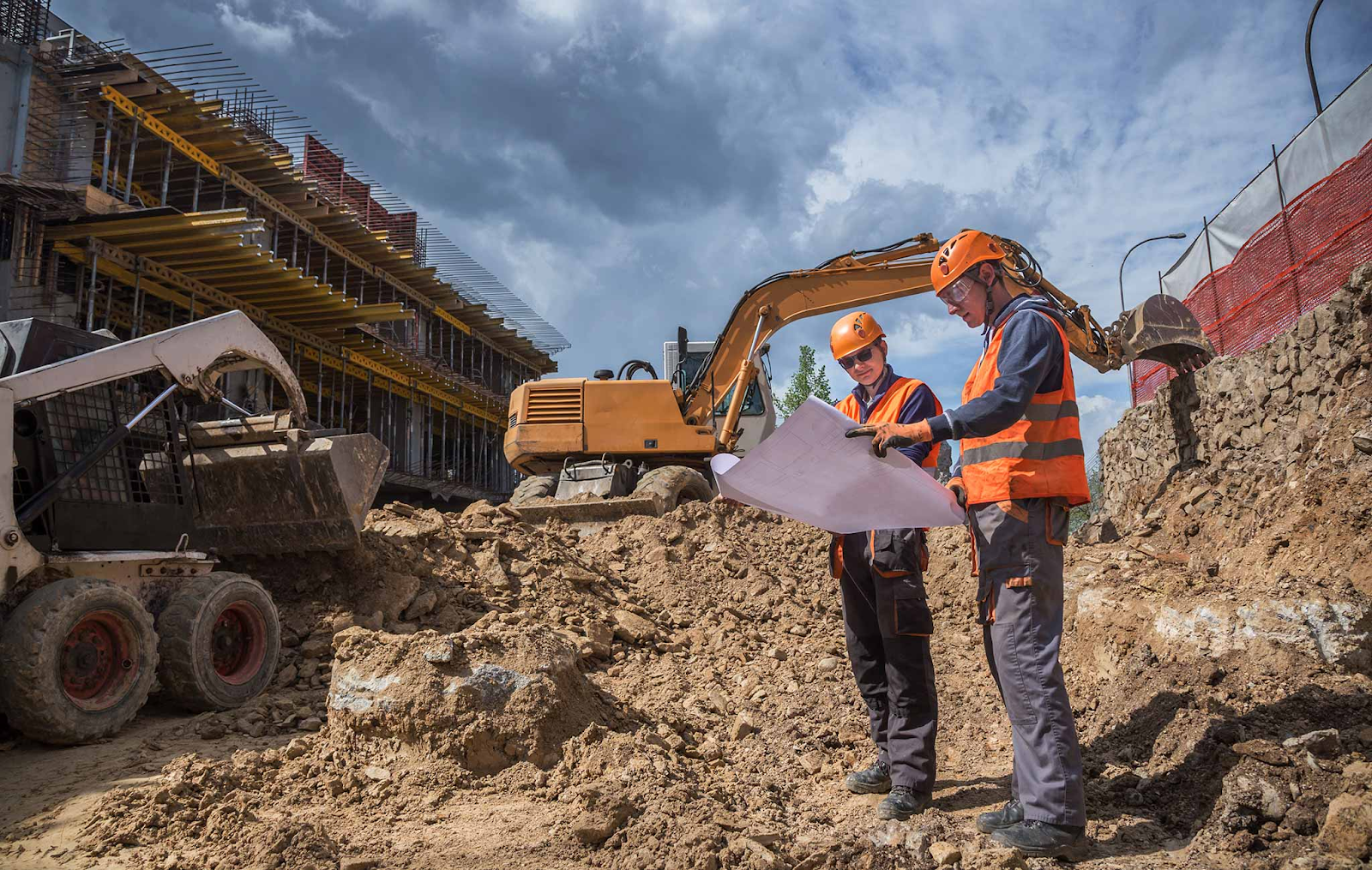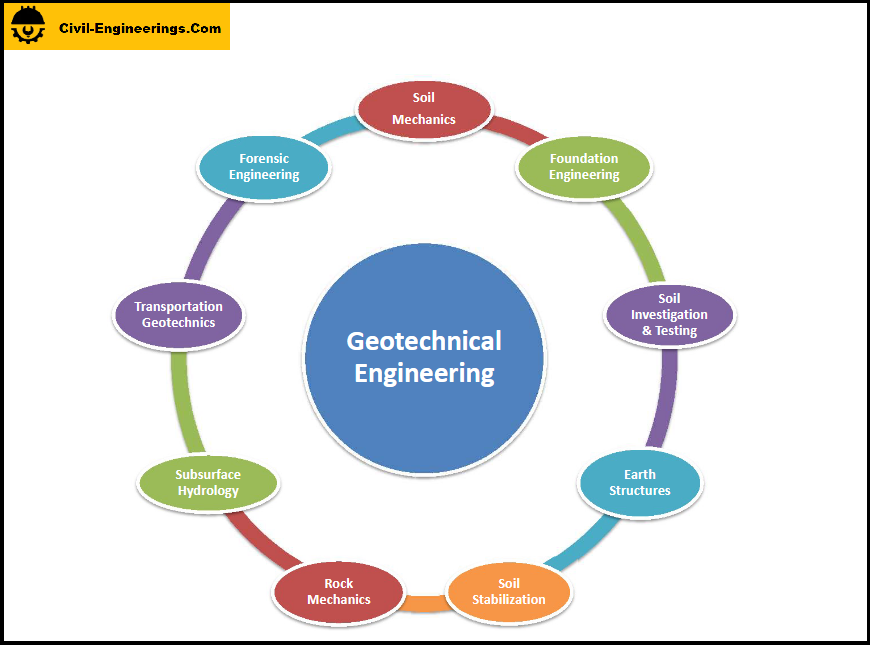3 Easy Facts About Geotechnical Engineering For Construction Projects Described
Little Known Questions About Geotechnical Engineering For Construction Projects.
Table of Contents8 Easy Facts About Geotechnical Engineering For Construction Projects DescribedGetting My Geotechnical Engineering For Construction Projects To WorkGeotechnical Engineering For Construction Projects Can Be Fun For EveryoneGet This Report about Geotechnical Engineering For Construction ProjectsGeotechnical Engineering For Construction Projects - An OverviewThe Greatest Guide To Geotechnical Engineering For Construction Projects
These functions have to be checked out by geotechnical designers to forecast their motions under various conditions., making this analysis required., in addition to exactly how they interact with building and constructions that have been set up on or within them, is one of the main descriptions for why geotechnical engineering is crucial.
Along with architectural planning and building, geotechnical engineering is likewise crucial to the repair and upkeep of pre-existing frameworks. Age-related deterioration or added troubles can influence a structure's stability and performance. Environmental management is completed with geotechnical engineering. Expertise in air, water, and soil quality maintenance is put to utilize by geotechnical engineers to decrease the negative effects of projects.
To sum up, geotechnical engineering is a crucial discipline that maintains the durability and honesty of civil framework. Geotechnical designers contribute to making structure jobs effective all over the world by understanding the behavior of earth products and applying appropriate planning approaches.
Indicators on Geotechnical Engineering For Construction Projects You Should Know
By checking out dirt, rock, and subsurface problems, geotechnical engineers provide vital understandings that assist in the design, building and construction, and maintenance of structures and infrastructure.

Indicators on Geotechnical Engineering For Construction Projects You Need To Know
Research laboratory screening: Determining the residential or commercial properties of soil and rock. Several high-profile building and construction tasks have actually successfully made use of geotechnical design to guarantee their stability and safety.

As a leader in geotechnical engineering, BECC Inc. is devoted to supplying cutting-edge and reliable solutions that meet the greatest standards of high quality and safety and security. For additional information on exactly how BECC Inc. can support your next building and construction job, contact us today and let us assist you improve strong ground.
William Rankine, a designer and physicist, created a different to Coulomb's earth pressure theory. Albert Atterberg developed the clay uniformity indices that are still utilized today for soil classification. In 1885, Osborne Reynolds recognized that shearing causes volumetric dilation of thick products and contraction of loose granular products. Modern geotechnical design is said to have actually begun in 1925 with the magazine of Erdbaumechanik by Karl von Terzaghi, a mechanical designer and rock hound.
What Does Geotechnical Engineering For Construction Projects Do?
Terzaghi likewise created the framework for concepts of bearing ability of foundations, and the theory for prediction of the rate of settlement of clay layers as a result of combination. Afterwards, Maurice Biot totally developed the three-dimensional soil loan consolidation concept, expanding the one-dimensional design previously created by Terzaghi to much more general hypotheses and presenting the set of basic formulas of Poroelasticity.
Geotechnical designers examine and determine the homes of subsurface problems and products.
Get This Report about Geotechnical Engineering For Construction Projects
Geologic mapping and analysis of geomorphology are commonly completed in consultation with a geologist or engineering geologist. Subsurface exploration usually includes in-situ testing (as an example, the standard penetration test and cone penetration test). The excavating of test pits and trenching (particularly for locating faults and slide planes) might additionally be utilized to learn more about soil problems at depth. Still, they are often made use of to enable a geologist or engineer to be reduced into the borehole for direct aesthetic and manual assessment of the soil and rock stratigraphy. Various soil samplers exist to satisfy the demands of various design tasks. The typical penetration examination, which utilizes a thick-walled split spoon sampler, is one of the most typical means to accumulate disrupted samples.

If the interface in between the mass and the base of an incline has a complex geometry, slope stability analysis is hard and numerical service approaches are needed. Typically, the user interface's specific geometry is unknown, and a streamlined user interface geometry is thought. Limited inclines need three-dimensional designs to be evaluated, so most slopes are analyzed thinking that they are definitely large and can be stood for by two-dimensional models.
The Of Geotechnical Engineering For Construction Projects
The empirical method may be referred to as complies with: General expedition enough to establish the rough nature, pattern, and homes of deposits. Evaluation of one of the most potential conditions and one of the most negative imaginable deviations. Producing the layout based upon a functioning theory of actions expected under the most probable conditions. Choice of amounts to be observed as construction proceeds and calculating their expected worths based on the functioning theory under one of the most negative conditions.
Dimension of quantities and evaluation of actual problems. Layout adjustment per real conditions The observational method is appropriate for building that has actually currently begun when an great site unanticipated development takes place or when a failing or crash looms or has currently happened. It is unsuitable for jobs whose style can not be altered during building and construction.